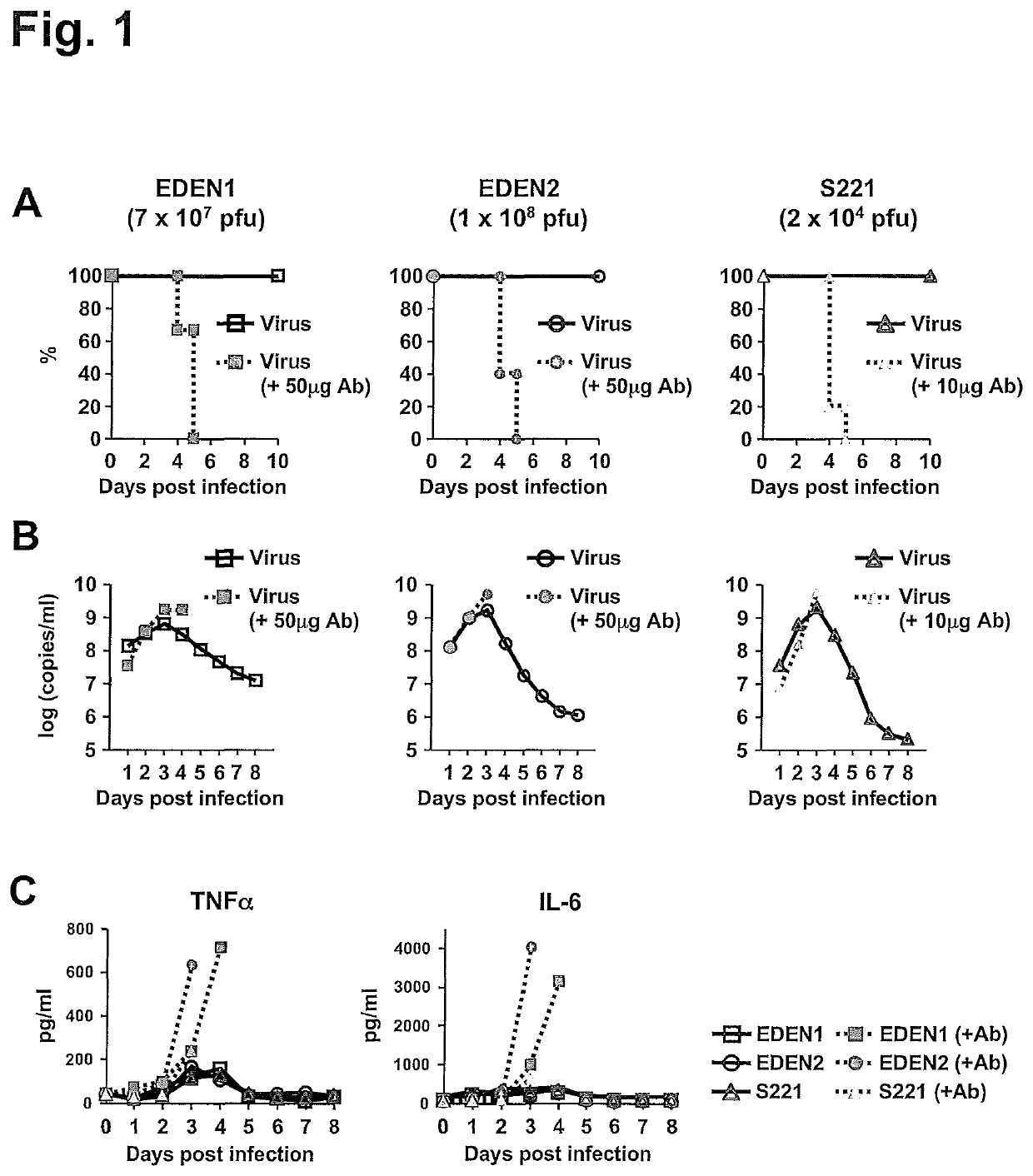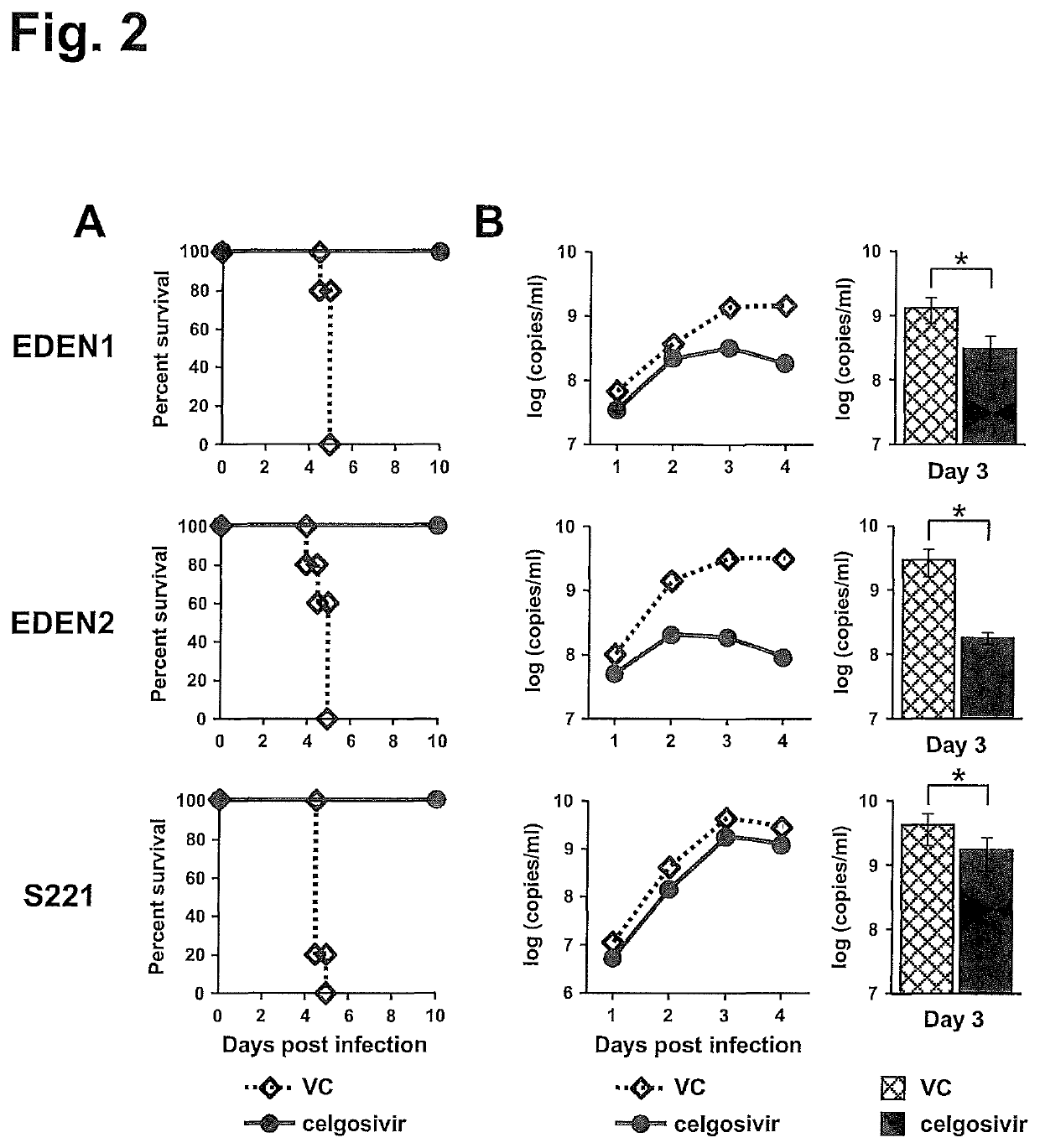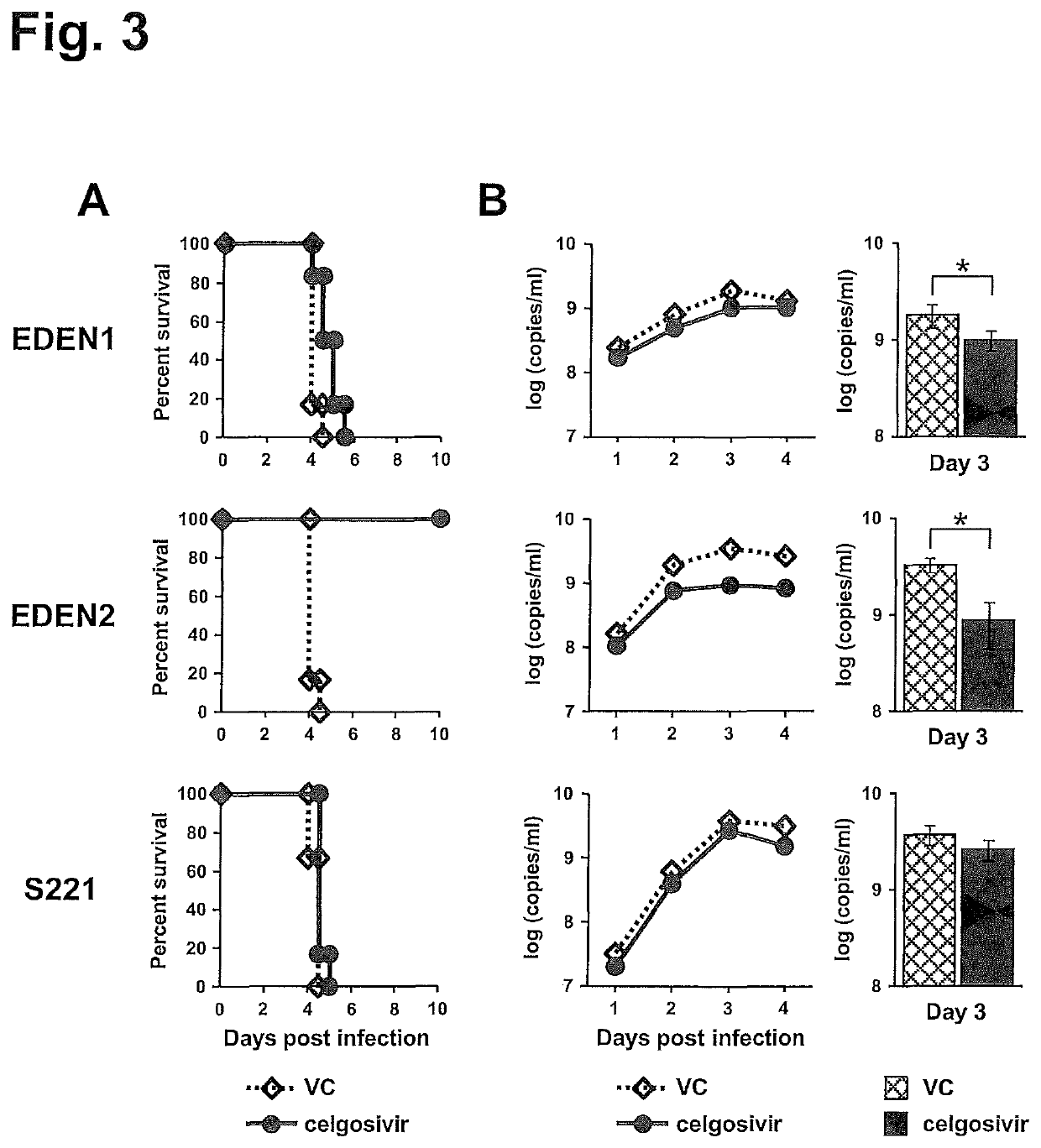Dosing regimens of celgosivir for the prevention of dengue
a technology of celgosivir and dengue, which is applied in the direction of antivirals, pharmaceutical delivery mechanisms, medical preparations, etc., can solve the problems of no approved preventive vaccine or antiviral prophylactic dengue disease approved, vascular leakage, etc., and achieves high effective concentration (ec50) value and in vivo efficacy, the effect of rapid and efficient absorbing
- Summary
- Abstract
- Description
- Claims
- Application Information
AI Technical Summary
Benefits of technology
Problems solved by technology
Method used
Image
Examples
example 1
tro Efficacy of Celgosivir is Modulated by Different Cell Lines and Viral Strains
[0130]BHK-21 cells (baby hamster kidney cell line), HuH7 cells (human hepatocyte cell line), and Vero cells (African green monkey kidney cell line), known as a type-I IFN-deficient cell type (Desmyter et al., 1968) were used to test the antiviral effect of celgosivir and were infected with EDEN1 (clinical DENV1 isolate), EDEN2 (clinical DENV2 isolate), or S221 (mouse-adapted DENV2 strain) at MOI of 0.3 and virus titer in the supernatant at 48 hours post-infection (pi) was used to determine EC50 of celgosivir. The effect of celgosivir against Ab-mediated infection using THP-1 cells with enhancing concentration of 4G2 Ab was also analyzed. NITD008, an adenosine analog inhibitor of DENV polymerase (Yin et al., 2009) was used as a positive control. The EC50 of celgosivir in HuH-7 cells was found to be different among the virus strains, and was higher for EDEN1 (17.4 μM) and S221 (5.1 μM) than EDEN2 171 (0.8...
example 2
r has a Different Antiviral Efficacy Among Virus Strains in Mice
[0132]AG129 mouse models of clinical DENV strains, EDEN1 and EDEN2, in addition to mouse-adapted S221 strain were developed. To increase infection level in mice, high virus titer of EDEN1 (7×107 pfu) and EDEN2 (1×108 pfu) were inoculated intravenously (iv) into AG129 mice. These virus titers did not induce mortality (FIG. 1A), although high levels of viremia could be detected over 8 days after infection (FIG. 1B). However when the infections were carried under ADE conditions, 100% mortality was observed by day 5 pi (FIG. 1A) for both EDEN1 and EDEN 2. The peak viremia was enhanced in the ADE infection (FIG. 1B), as was the level of serum cytokines such as TNFα and IL-6 (FIG. 1C), which was more prominent for the ADE infection with clinical isolates. To test the in vivo efficacy of celgosivir, mice were orally administered 50 mg / kg twice-daily (BID) starting at the time of infection. As shown in FIG. 2A, this dosing regi...
example 3
Efficacy when Administration is Commenced During Peak Viremia Becomes Less Prominent in Mice
[0133]Our in vivo data showed that the clinical strains examined in this study have a better sensitivity to celgosivir compared with S221 that has been used for the drug evaluation (Rathore et al., 2011; Watanabe et al., 2012a). Nevertheless celgosivir seems less effective in humans even for DENV2-infected trial subjects (Low et al., 2014). Since dengue fever patients in general present at a clinic when viremia is at a peak level (Low et al., 2014; Nguyen et al., 2013; Tricou et al., 2010), we next compared the 2 different dosing regimens; one started at the time of infection and another started at the time of peak viremia (on day 3 pi) similar to human situation (FIG. 4A). In this experiment, we used a non-lethal viremia mouse model, which permits the tracking of viremia kinetics for a longer period of time (FIG. 1B). When mice were administered celgosivir from the time of infection, viremia...
PUM
| Property | Measurement | Unit |
|---|---|---|
| concentration | aaaaa | aaaaa |
| concentration | aaaaa | aaaaa |
| concentration | aaaaa | aaaaa |
Abstract
Description
Claims
Application Information
 Login to View More
Login to View More - R&D
- Intellectual Property
- Life Sciences
- Materials
- Tech Scout
- Unparalleled Data Quality
- Higher Quality Content
- 60% Fewer Hallucinations
Browse by: Latest US Patents, China's latest patents, Technical Efficacy Thesaurus, Application Domain, Technology Topic, Popular Technical Reports.
© 2025 PatSnap. All rights reserved.Legal|Privacy policy|Modern Slavery Act Transparency Statement|Sitemap|About US| Contact US: help@patsnap.com



